What’s new in Qlik Sense SaaS December 2021
Mats Severin rounds up the final updates of 2021 in the Qlik Sense SaaS December 2021 release.
Qlik Reporting Service
Distribute customisable reports from Qlik Sense apps to a variety of channels by using the Qlik Reporting Service connector in Qlik App Automations. Features include:
- Create a multi-page report using a template, or create your own fully custom report.
- Generate multiple different reports from a single reporting action.
- Deliver reports to multiple channels (email, Amazon S3, Dropbox, Google Cloud Storage, FTP, SFTP).
- Send reports to recipients externally to your Qlik Cloud environment.
- You can also integrate the Qlik Reporting Service API into your own enterprise systems.
You can find more information on how to get started and current limitations here.
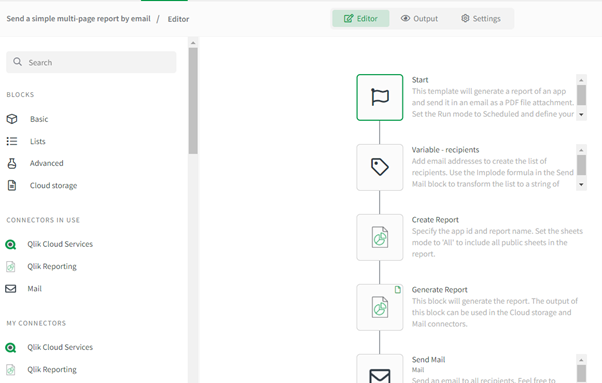
Qlik Lineage Connectors
Users can now automatically visualise graphical data flows from multiple external data sources with the introduction of Qlik Lineage Connectors. This new add-on module empowers users to uncover more insights by extracting data lineage and metadata from external data sources. The result is that the Impact Analysis feature can not only show the data lineage of your internal Qlik Sense SaaS apps, but also the data lineage of Qlik Sense on-premises apps, QlikView documents and even Tableau and Power BI apps. It can also show the upstream lineage of data stored in repositories such as Snowflake or SQL Server. Qlik Lineage Connectors is installed on a local machine and accessed as a service on your web browser.
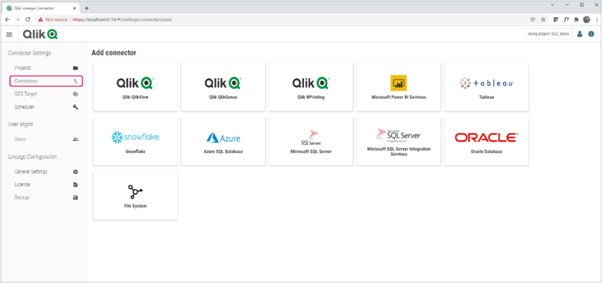
Qlik Application Automation Templates
Qlik Application Automation templates help users to accelerate workflow development. Select a starter template from a list of Qlik-generated blueprints and then configure the blocks, rather than creating the automation from a blank page. Currently there are 18 automation templates in various categories to help get you started. Automation templates are available with every Qlik Application Automation subscription and do not require additional licensing or pricing.
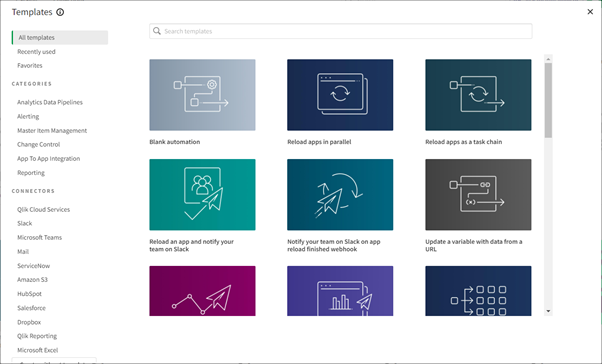
New connectors in Automations
Qlik Application Automations now has seven new connectors in the following categories:
- Data Warehouses: Get data from (or push data to) Snowflake, Amazon Redshift and Google Big Query.
- Platform Enhancements: Qlik Auto ML – the first integration from the acquisition of the machine learning platform Big Squid.
- Remote Applications: control and trigger jobs in remote applications including Dbt Cloud, UI Path and Splunk.
New KPIs for catalog items
Catalog items can now display KPIs that allow you to easily understand the popularity and usage of your data content. The KPIs track viewing trends and the number of unique views in the last 28 days for all data items in the catalog view. Furthermore, for data file items, there is also an indicator that tracks the number of applications that currently use the file. The indicators are displayed as metrics icons just below the item. Hover over an icon to bring up a tooltip with more information.
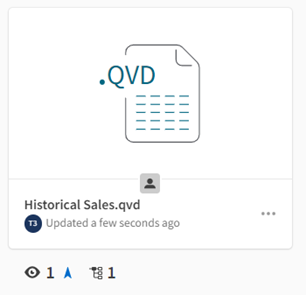
Loading data from the data catalog in Data load editor
Last month, the ability to browse and load data from the data catalog when using the Data Manager was introduced. This month, you can also browse and select data sets from the data catalog using the Data load editor.
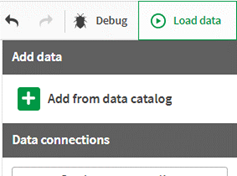
Hybrid Data Delivery Service: Full Reload Option
Use the Full Load functionality delivered in this release for data loading scenarios that do not require continuous data streaming using change data capture (CDC) or when the data source does not support CDC. The Full Load process works by loading one complete table or file at a time, rather than updating the target when a change event occurs. This new Hybrid Data Delivery feature supports the same number of data sources as the current version of Qlik Replicate (please refer to the support matrix for more details here). However, Hybrid Data Delivery only supports Active QVDs and Snowflake as data targets at this time.
Data Service: SQL-based table in Snowflake storage data asset
Using the Data Services, there is now an option to create a Snowflake storage data asset based on another Snowflake storage data asset and adding one or more SQL-based tables to it. SQL-based tables allow you to create a new data asset by applying any needed transformations on the source data asset using a custom SQL query.
Generic support for trusted OAuth clients
Qlik Cloud supports OAuth, a standard security protocol that protects end-user credentials while still allowing access to API resources through third party applications. Support for OAuth clients lets you deliver secure and seamless integrations of Qlik Cloud Services with other software. It also makes embedding Qlik applications significantly easier. New tutorials are available to show you how to build client applications, see the OAuth Libraries section on the tutorials page of the Developer portal.
Insight Advisor supports dollar-sign expression
Insight Advisor can now recognise expressions contained in variables and use them when generating analytics. This allows users who manage expressions in variables to generate more relevant results using the Insight Advisor.
Connector removal
The Bitly V2 built-in web connector has been removed.
Reflection of Qlik Sense SaaS December 2021
To summarise, the December release is on par with the whole Qlik year of 2021 – it’s been an innovative period with extraordinary pace of continual releases of new features in the Qlik Active Intelligence Platform. In December we have seen the introduction of a number of new features. The ability to visualise graphic data flows of external data sources using the new Lineage connectors to supplement the Impact Analysis, which demonstrates more value being delivered from the NodeGraph acquisition.
The introduction of the Qlik Reporting service, where users can distribute automated reports using Qlik App Automation, is a first step in getting less dependent on external report distribution tools and Qlik’s very own legacy NPrinting. Plus, the addition of Qlik Automation templates, to help get users started on building automated tasks and workflows with best practice baked in, as well as the continuous additions of new connectors in Qlik App Automations, encourages users to automate their use of analytics. The decision by Qlik to use App Automations for Qlik Reporting Services puts it front and centre of the Qlik Active Intelligence Platform, becoming the middleware that ties new features into the platform which should provide dividends in the long term. We at Ometis are confident this will help speed up new innovations reaching the platform.
Besides the focus on continuously adding new functionality in the cloud, there are also efforts to enhance the existing data cataloguing tools and data services capabilities. The introduction of the data item KPI icons is familiar to what have seen in the client-managed Qlik Catalog. The full reload option in the hybrid data delivery service and adding customised SQL-tables to Snowflake data assets are other examples of strengthening the data services capabilities compared to what exists in the client-managed data integration products.


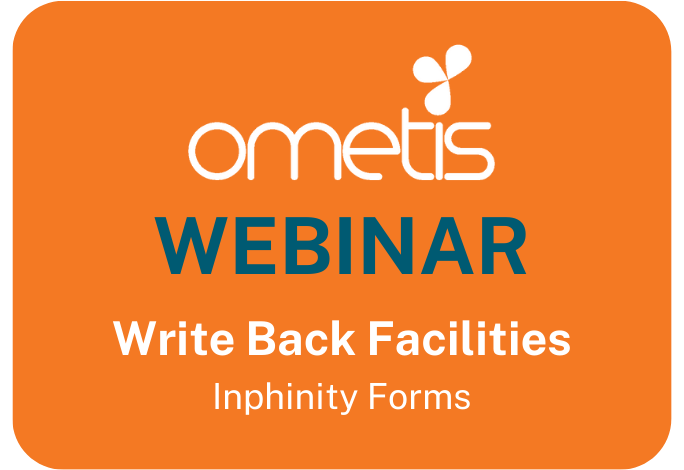


Comments